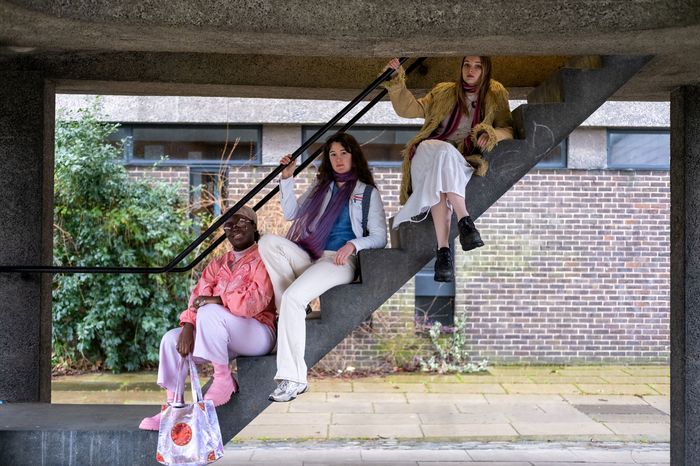Where are the Sidge boys?
We all know about the Sidgwick girls. But why are there no Sidge boys? Natasha Sauvage has the answers

Anyone who’s been at Cambridge for long enough knows of the stereotypical “Sidge girlie”. The term is attributed to someone who is perceived as a mildly oblivious skinny-scarf wearer, and one who takes equal pride in her eyeliner and her degree. The term has been criticised for its narrowness and lack of inclusivity, given that it pertains to the fashion of white women, as the Camfession below points out.
However, the lack of inclusivity in the term “Sidge girlie” is by design. It is not designed to highlight, but to attack, the aspiring fashion icons that roam Sidgwick Site. Their desire to be unique in their style — which ends up creating an unknowing army of lookalikes — is weaponised against them. It is through this weaponisation of an innocent desire that the term “Sidge girlie” takes on an almost pejorative function.
“Their desire to be unique in their style is weaponised against them”
Of course this is not okay. Misogyny doesn’t stop being misogyny because one attaches the modifier “white” in front of “women”. Innocent or not, it is ultimately part of a larger trend in which women’s fashion is used as a proxy to criticise them, a trend in which the clothes make the woman and not vice versa. The desire to be unique is an understandable one. Coming into Cambridge, many students were used to being “the smartest one in the room”. It becomes infinitely more difficult to cling onto that as an identity when one goes from being the smartest to being just average. Given that, it is natural to cling onto something else that allows one to retain that sense of individuality. Some turn to student performances at the ADC where they can be the star on stage. Others turn to choirs and bands. And some turn to the world of fashion where they are free to reinvent the wheel as they like. Enter stage left: Sidge girlie.
If the idea of the “Sidge girlie” was truly just a light-hearted jab at the stereotypical middle-class white girl who, despite her best intentions, comes across as a shallow, insipid being who fails to view the world with more complexity, why is there no counterpart in the middle-class white boy who is equally as ignorant?
“Fashion is part of the performance we play in a patriarchal society where one’s value is rooted in her appearance”
First of all, men are not subject to the same fashion standards as women. This is not just a fact in Cambridge, but a fact in life. Clothes make the woman; men make the clothes. Fashion is part of the performance we play in a patriarchal society where one’s value is rooted in her appearance. Through recognising this, it becomes a point of mockery. Even down to the specific terminology of “girlie”, employing the childish diminutive “-ie” rather than sticking with “girl”, it becomes evident why there is a Sidge girlie and not a “Sidge boyie”. It looks ridiculous just written down — it is precisely because fashion acts as an arm of the patriarchy, twisting even the simple act of self-expression into a stereotype laden with negative subtext. When the Sidge girlie steps out in her skinny scarf and cowboy boots, intending it to be a liberating act of self-expression, it instead becomes a symbolic way of decorating the metal bars of the patriarchal cage that holds her.
Second of all, it is unthinkable that a white man could ever be the butt of a joke, the recipient of derision and mockery — why target white men when women are the lowest hanging fruit? It is a trend that repeats itself again and again. It is the reason why difficult white male customers are deemed “male Karens”, placing white women as the default only when it pertains to a clearly negative meaning. It is the reason why the term “it girl”, which encompasses all creatively-minded fashion girls regardless of race, acts as a double-edged sword in the same way “Sidge girlie” does, while men who do the absolute bare minimum by wearing something other than a t-shirt and jeans are deemed “fashion kings”.
This isn’t to say that the Sidge girlie doesn’t exist — she most certainly does — but it is essential that we ask ourselves why we create so many stereotypes designed to put women into neat little boxes while men roam free of judgement. Allowing an ignorant woman to just be an ignorant woman would mean engaging with her as a human rather than as a stereotype — which, apparently, is an unthinkable concept. The employment of stereotypes is not innocuous nor is it “light-hearted”, although it may appear that way on the surface. The Sidge girlie reads as a fictional character, and again, this is by design. It vests a woman of her personhood and places her reality in the realm of fiction, thus making it socially acceptable to mock her. The Sidge girlie puts out her cigarette and misogyny is crowned king.
 Features / Should I stay or should I go? Cambridge students and alumni reflect on how their memories stay with them15 December 2025
Features / Should I stay or should I go? Cambridge students and alumni reflect on how their memories stay with them15 December 2025 News / Cambridge study finds students learn better with notes than AI13 December 2025
News / Cambridge study finds students learn better with notes than AI13 December 2025 Comment / The magic of an eight-week term15 December 2025
Comment / The magic of an eight-week term15 December 2025 News / News In Brief: Michaelmas marriages, monogamous mammals, and messaging manipulation15 December 2025
News / News In Brief: Michaelmas marriages, monogamous mammals, and messaging manipulation15 December 2025 News / Uni Scout and Guide Club affirms trans inclusion 12 December 2025
News / Uni Scout and Guide Club affirms trans inclusion 12 December 2025










